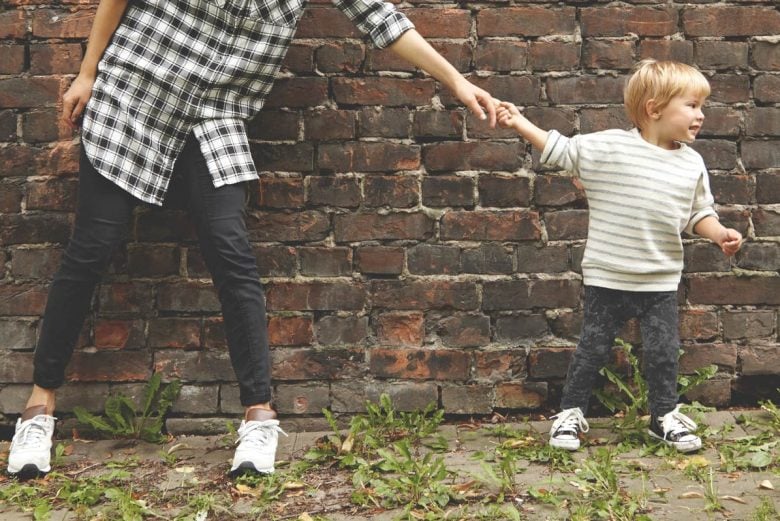
Correct these mistakes and your child will relax into who they really are.
You love your child. You’re committed to helping them be their best. But if you’re not aware, you can slip into mistakes that undermine your efforts.
In this episode, Carol and Anne share 3 ways you might be wounding your Type 2 child’s tender nature. Their suggestions will not only honor your child, but help you deal with your child’s endless questions.
This week’s Parenting Practice
Listen to this week’s episode. Which of the 3 mistakes do you see in your own parenting experience? Consider the ways that you can acknowledge your Type 2 child’s gifts and better support their gentle, planned-out nature. Refer to the Type 2 section of The Child Whisperer book for additional insight.
Transcript of podcast episode
Carol: Are you a parent of the Type 2 sensitive child? You could easily be making these mistakes without knowing it. I qualify for that as I did not have this information and insight when my two Type 2 children were young.
Welcome to The Child Whisperer Podcast. I’m your host, Carol Tuttle, author of the bestselling parenting book, The Child Whisperer. I’m with my co-host, Anne Tuttle Brown.
So my hope for you is that you’ll learn from what we’re going to share with you today and you’ll make the changes that you can make immediately. Because I always say, and my kids have even heard me say this, if I could go back and change one thing in my parenting experience, I would change my strategies with my Type 2 children especially, because they’re the ones that I think got the brunt of my lack of awareness of their nature. And so, I’m very open to having my Type 2 daughter who is my co-host, even, “Mom, you made this mistake, Mom, you made all three.” I’m like, “I’m okay that.”
Anne: Hey look, we’re still together, you know.
Carol: Yeah, because, you know, I know I wasn’t like waking up going, “How can I ruin these children’s lives?” I mean, I did what was more true to me and not to them. And that’s why the book is so popular is, you know, the parents reading this book are going, “I don’t want to do this to my kids but I am without knowing this.” So that’s why I’m excited for you to know it now because I didn’t know it and we’ve had to make up the difference, so to speak as the years have gone by.
Anne: Yeah, there has been some healing that’s needed to be done.
Carol: So lay them out there, my Type 2 child.
Anne: Let’s start by reviewing the movement for a Type 2 child. The Type 2 child is the sensitive child, because they connect to the world primarily emotionally, they have a subtle, flowing movement. They’re more introverted, they like comfort, connection and have a steady flow about them. So the first mistake you could make is shutting down their questions. Type 2s like details. So they get those details by asking questions. And this is pulled right from ‘The Child Whisperer book page 101. Sometimes you may wish that your Type 2 child’s questions would stop, but they will keep asking questions and keep asking questions.
And if you shut that down, then it will cause them to second guess themselves or feel more nervous and anxious because they aren’t allowed to explore and ask those questions. So, it’s a fine art of how to guide the questions. I have a Type 2 three-year-old and for the last, I mean, he’s talking a lot now, probably last eight months. It’s been why, why, why, why, why. And I think I have a pretty elongated endurance for his questions because I’m a Type 2 and I naturally like can go down that path. My Type 3 husband has learned some tricks to like shorten it up a bit without being like, “Why are you asking so many questions? Stop asking your questions. I don’t know. Figure it out.” So here’s an example from yesterday. He was deciding whether he wanted to wear pants or shorts. He decided on shorts.
Carol: That’s a big decision for him, too.
Anne: He does take a lot of time on what to wear.
Carol: It is. It’s like comfort.
Anne: He wants to be very comfortable.
Carol: This is huge and this the pattern I want.
Anne: It’s fun to see him, you know, think about all those details. So he decided on shorts and he said, “Did you cut these?” I said, “No.” ”Why?” ”Because they were made that way.” ”Why?” ”Because they are shorts.” ”For summer.” ”Why is it summer?” ”Because it’s hotter outside.” ”Why?” ”Because the sun’s closer to the Earth.” ”Why?” ”Because the equator is tilted,” or whatever.’
Carol: You do have a long trail and being able to answer, I would finally just say, “I don’t know.”
Anne: So, yes, sometimes I say…
Carol: That’s a great question.
Anne: “I don’t know. Why do you think?” Or I’ll say, “I don’t know. What do you think?” Or I’ll say, I’ll just like change the topic and be like, “Why do you love summer?” Or, “Do you love summer?” Or, “Look, your shorts are blue.” And try to like kind of get off and it doesn’t always work. He says, “No, I want you to tell me.”
Carol: What does Tanner do?
Anne: Tanner will do the same thing, or I find I’ll just answer the same question like over and over again. Because it’s hot outside, because it’s warm, because it’s sunny, you know. Then he’ll finally, you know, get off the…
Carol: What if you were to just go, “Uh-huh,” like not even try and answer it. Just say, “Yeah.”
Anne: Yeah. I mean, he asks so many questions.
Carol: Because what if that’s just what’s his expressive self is saying.
Anne: That’s true. Yeah. He’s just…kind of listen.
Carol: Maybe he doesn’t care so much about the answer, just it’s just how he expresses himself.
Anne: Well, I have tried like, “Why do you think?” And he’s like, “No, I want you to tell me.” I don’t know. And so sometimes I have been like, “I don’t know.” And one time last week I caught myself being like, “Sam, you ask so many questions, you’re really good at asking questions.” Just being like, oh my goodness, it just can be draining. I think that’s what happens to the parents. Because you’re like, “I don’t know. Like stop asking. Just go do something.”
Carol: Have you ever tried saying, “You have two more questions. Let’s ask them.”
Anne: That’s a good idea.
Carol: “Then we’re going to stop our questions for now.”
Anne: You know, that’s a really good idea. And I think that’s…
Carol: “Okay, what’s your question number one, all right. What’s number two? Okay. Now we’re going to…”
Anne: Okay. Now I’m going to try that. And I’m going to follow it up with, ”I think you’ve got all the details you need.” Because Type 2s, that is the challenge then, is you’ll ask question after question after question and you’ll never move forward. So how many questions could he have asked about summer shorts?
Carol: Those are great questions you had. That’s enough for now.
Anne: I love that idea.
Carol: You know where I got that? I use it with your father. Honestly. I’ll say, “I can take three more questions.” Or I will say to him, “I’ve told you everything I know, which is it. I don’t have any more answers. So, you know, please don’t ask me anymore questions.”
Anne: And that’s another tip, is like, let…especially if your children are older, I’m dealing with 3-year old. But like, “Why don’t you go investigate that more?”
Carol: Yeah, they can get some of the…a lot of their questions…
Anne: Maybe you could do a quick Google search. I would suggest using…you know, you can kind of guide them where to look for the answers. But…
Carol: Or you might say, “You know, Uncle so-and-so knows a lot about that. Should text him or…
Anne: Yeah. So definitely using your resources…
Carol: There’s a way to redirect it. But I do think there is value in saying, “This is how many more questions we’re going to experience right now.”
Anne: Yeah. I love that idea. I’m going to try that.
Carol: Let me know how that goes. Works well with my husband.
Anne: That’s great. All right. The next mistake is taking advantage of their emotional nature.
Carol: I did this without knowing it. And that’s why I don’t think you guys asked as many questions as you might have, because you were too busy doing job number two.
Anne: Yeah. So what will happen is you want there to be a feeling of, you want everyone to feel safe and loved. And so, you’ll feel a responsibility for the unsettled emotions and try and process them even though they aren’t yours and you…there’s nothing you can do about it. I remember times where, I mean, you’ve shared your experience of feeling very heavy and depressed and I was trying to make you feel…I was trying to process those emotions for you, but not knowing what to do. You can’t. And so I think what would have helped that is conversation of saying, “You have this tendency, you have this gift, you bring comfort to the family, but it’s not your responsibility to take care of my emotions. I know I’m dealing with this, and I’m fine. I’m going to be okay. And you don’t need to take this on.” Just having that like clear boundary would have been really supportive so you can speak to that.
Carol: If it were now, this was…I would be a perfect candidate for the Carol Tuttle Healing Center to say, “I got to take care of some stuff.” Because it’s just, it’s so, you know, what I’m dealing with on an emotional level needs to be…
Anne: It was taking our family out.
Carol: Yeah. It was disruptive on so many levels that that would’ve been a really accountable thing to do as a parent to say, “I got to clean a lot of this up and get in a healthier place” so that, I don’t know, then that conversation is a reasonable one is, you know, how do you tell a five-year old, “You don’t have to take care of my anger.”
Anne: Yeah. And, you know, my memory is probably just because…my memories are more from my teenage years of like just something’s going on with Mom, I can see it, I can feel it, I can hear the conversations. I’m old enough to, you know, and it was like I don’t know where I should go or what I should do with this.
Carol: Well, that trickled into our adult lives working together. I’d say we’ve done really well in the last year because I was very accountable now and very mindful of, I don’t expect it, you know, I’ve got to take care of myself. But it would still trigger you. I remember we’ve had to work through some me supporting you in getting clear of that now. Because that was a learned response in your childhood. And that’s what you’re doing…if your children, if you’re shutting them down by them having to now make your emotional experience more important than theirs and they’ve got to be mindful of yours, or try and change it or do something to make your life more comfortable, you’re teaching them to just, that they’re not the priority and they’re now going to play that role with other people in their life as they mature and grow.
Anne: Oh, I see residue of this still in my life and there’s…yeah. I remember we had a really honest conversation. I think I was yelling at you and we were both really honest and, since…that was like two years ago. Do you remember that?
Carol: Yeah. But I’m able to now see the bigger picture. I knew exactly where this…
Anne: Yeah. I thank you and your…
Carol: …I don’t take it personal. I just go…
Anne: Your response was really reassuring to me of like, I know I did that and I’m really sorry. And like, but it was that reassurance that this is the page from the book or reassure them that they are not responsible for anyone’s feelings but their own. That’s the…just having that conversation and then the guidance and support to build that are life tools that a Type 2 especially will bounce it from.
Carol: Because what will happen, you usually attract…and you had a string of boyfriends then that had a lot of emotional issues that, you know. They kinda were me embodied in a guy you dated.
Anne: You’ll experience it in ways…
Carol: That’s what…you’re now playing this role. You attract people outside your family group you’re going to do it for now.
Anne: And fortunately, I married someone who I feel so emotionally safe and secure with.
Carol: Yeah, no, that was the difference. You were doing some of your own healing work and you shifted that.
Anne: Yeah. So this is the big one. This is…notice where you’re doing that. I would even be prayerful, you know, to really know how you can support your Type 2 children and their emotional needs because this is something that will set them up for success throughout their life.
Carol: They’re emotionally connected to this world, so they’re going to be very, very emotionally aware. Number three I think is probably something, a mistake. Probably the most common of any of the three, is this next one.
Anne: Hold that thought. Let’s continue this discussion after a short break.
Woman: Knowing your Type and your child’s Type changes everything, doesn’t it? It helps you to understand one another better. It can help your outside too. When you wear clothes that express your type, you feel better, you look better and people understand you more easily including your kids. Carol Tuttle created the “Dressing Your Truth” program to help you dress true to your type and create a personal style that expresses who you really are. The best part, you can learn all the basics for free. Start loving how you look and feel at dressingyourtruth.com
Anne: And that is not allowing enough time for change or springing something on them. This will cause worry and stress because without enough information or time to process that information, a Type 2 can go into a lot of assumptions and prepare for like worst case scenario and can make misinformed assumptions of what’s going to happen. And so, I think this is kind of a tricky one because life can get messy and chaotic and you’ll just need to make last minute changes and spring into action.
Carol: That’s different though I think than what we’re talking about here.
Anne: Okay. Define more…
Carol: We’re talking about the day-to-day routines, things that are more predictable and that your plans you’ve made, and knowing how to work with their approach to life so that they’re integrated into that experience true to their nature. Because yeah, there’s going to be like, we ought to change course here.
Anne: And everyone’s just going to have to check in that moment. Okay, that makes sense. So a Type 3 expert Sarah, she has a Type 2 and Type 4. They’re twins, and she excels at this. She really preps them for if they’re going on a vacation, where they’re going to be sleeping, what they should bring on the airplane, what the car ride will look like. What’s the…you know, she’s really prepping for them. What have you seen…
Carol: Well, I’ve seen Chris even…
Anne: …her do, examples you can get.
Carol: Chris as well, because Chris is the Type 2 with a secondary 4. So, he gets it on a deep level, his need for it. And he has told me, ”Well, we haven’t prepared Ruby for that.” So that’s not an option. It’s not worth what he’s going to deal with if they haven’t taken the steps to inform her or to prepare Addie who’s the Type 2. So he’ll even make that a part of his decision-making process to know how…he’s seen the difference. His children are very stable, they’re well adapted when they’re given this support. And they are, they’re well-mannered kids because they are very mindful of this approach. And so, I think Type…children just, your family starts operating kind of like a whirlwind and you’re not able to honor the variables of each of the different Types especially, is your Type 2 child caught up in the bigger energy of the family and it’s causing stress. They’re whiny, they get sick a lot, got a lot of sniffles, you know, those are all signs. This child is not being honored for their more methodical nature and movement in the world.
Anne: So some life scenarios that would, you know, be a bigger change that you can prep them for is starting a new school year, moving or meeting a new group of people. And obviously these are big enough changes that you could prepare enough time to, you know, give them the information that they would seek to, so they can gather the details and start to process that information. Other things I think would be like, if you’re going to visit family or a group of friends that they haven’t seen in a while, kind of let them know or talk about it, ask them if they have any questions about it. I’ve seen this in me even now, like we had…I had my dinner plans set and ready to go and you had offered to take us to dinner to one of our favorite spots. But it just kind of like threw me as I was like, “Well, I already had this plan to eat and I had our evening plans planned.” And it was like changing this, because I’m so far out in my mind of like what the next step is, that I was just like having a really hard time getting excited about the change of plans because that night it was so like, the flow was already happening. So that’s just an example of like even those little things like, let’s go out to dinner when you already had your mind made up on what you were doing, just understand that it’s going to just take a minute for your child to move and then join the rest of the family in there.
Carol: Just last night I was sharing this example with your dad, who’s a Type 2, about your Type 2 brother. At the time of this recording, we’re flying to California because my mother had just recently passed away and we have a funeral. And so last-minute flights, prices are kind of crazy. They’re the higher priced tickets. And when Chris called me and I shared that he needed to buy these more expensive tickets, well, my husband’s response says, “Why can’t he just go on an earlier flight?” And I said, “Well, you’re welcome to have that conversation with him because I will tell you exactly how Chris is processing this. He’s thinking about, because his daughters will still nap some days and not, so his outcome, he’s seeing that I want my daughters to be there on their best behavior at this funeral.” Okay. So that goes three days back. Which days are getting naps, which days are not, what time are they leaving? I said, “It’s not a simple thought of, I just want the cheaper ticket. I’ll go earlier.” He’s had to look at the two days prior. What’s got to happen the day of the funeral. This is the process, the details.
Anne: And that is how a Type 2 brain works. You’re very…I’m two weeks out in my mind.
Carol: Yeah.
Anne: And connected through this…
Carol: You can you can relate to.
Anne: Yeah, definitely.
Carol: He’s thinking about, I need my girls to be rested. Well, that’s going to involve the two days before. So I said, “So, you can call him.” I know the thought process he’s going through.
Anne: Definitely. And that’s why that adjustment takes longer because there is so much, it’s just an elongated thought process.
Carol: Yeah. It’s a flow. We talk about Type 2 energy being like a river, the river comes from where it was, goes into where you are at and keeps going.
Anne: It takes a long time for a river to change course, and then it changes course. So, I think just this understanding gives you a lot of compassion and just like, “Okay, I get it. I get where you’re coming from.” And you can move with it a little bit more gracefully rather than like, “Oh, I feel like you’re just moving mud.” So, understanding that in your child, what questions do you need answered, giving that reassurance…
Carol: A lot of times, hey could come up, I mean, by the time they’re five years old, they’re old enough to start incorporating some planning in their life. Like bedtime, what do you want? How do you want to have bed? You know.
Anne: Oh, well, my three-year-old…
Carol: What’s the plan?
Anne: …he chooses what he wears, because I know he’s really particular about what he wants to wear. So you make the choice, come to me when you’re ready, you know. Yeah, definitely. If you’re not employing your Type 2 in the plans, do it because they will love it and it will benefit them.
Carol: Well, they’re the ones with the gift.
Anne: Yes.
Carol: That’s what’s tedious for people is they start doing what their child’s nature is designed to do. It’s like just support them in doing what they need to do by creating the environment to allow them to bring that to the experience. Don’t, for any Type, don’t be the spontaneous parent, you know, you got to create an environment that supports them in that true nature. Look at these three mistakes you could be making, which are you making? Just choose. If you’re making all three, just choose one for now and make the correction on that and see the benefits that you’ll derive from that as your child becomes more calm. When a Type 2 child isn’t calm and they’re whiny and they’re fussy, there’s a message in that, they’re stressed. So what is it that wants to happen that supports them in their natural state of calm and flow? Put it to practice, support your child in living true to their nature and acknowledge them for the gifts they bring to the world. There’s a lot of affirmations in “The Child Whisperer” book for your Type 2 child that you can recognize their gifts and natural tendencies in a positive way. Refer to those often, and just in everyday conversation, share your validation of who they are.
Thanks for listening. For more support, go to thechildwhisperer.com or you can purchase the book, subscribe to our weekly parenting practice email and find a transcription and audio of “The Child Whisperer” podcast.
Anne: If you’re listening on iTunes, thank you for leaving a review. If you have a parenting question, please send it to [email protected].



